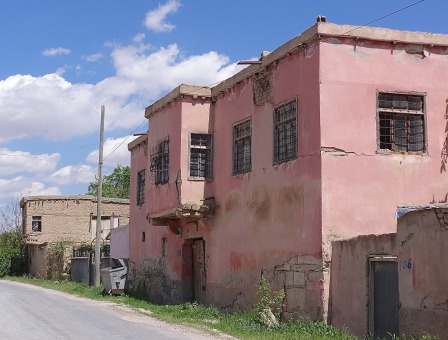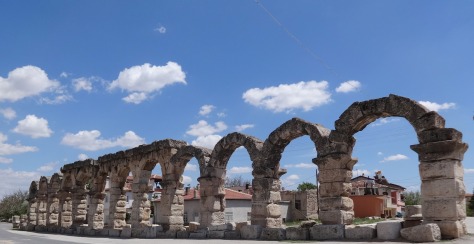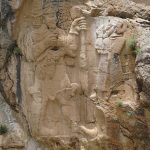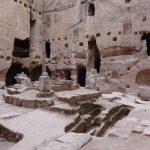The ancient Tyana Population: 5,500
Market day: Friday
Favourite son: Apollonius of Tyana (philosopher, 15-98 AD)
A short bus ride south of Niğde will bring you to Kemerhisar (“Arched Castle)” where the slight remains of old Tyana are littered about an all-but-forgotten village.
Backstory
Tyana seems to have started life as the Hittite Tuwanuva. After the break-up of the Hittite Empire it continued to flourish as a Neo-Hittite kingdom, one of whose rulers was Warpalawa who appears on a fine carving at İvriz, near Eregli.
Its location near the Cilician Gates mountain pass ensured that Tyana would continue to flourish under the Romans although its name appears to have changed several times along the way. It also features in the story of Queen Zenobia of Palmyra (in modern Syria) who, in 269, led her army into Anatolia and managed to occupy most of the land as far as Ancyra (Ankara). The Emperor Aurelian appears to have ignored her at first but then in 272-73 fought back. Tyana had sided with Zenobia but Apollonius pleaded successfully with the emperor to spare it.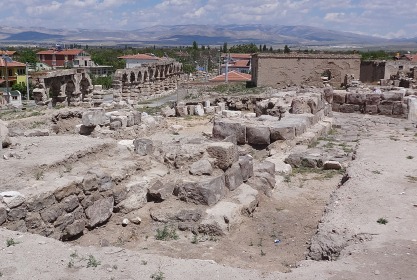
In 372 the Roman province of Cappadocia was divided into two and Tyana became the capital of Cappadocia Secunda. It then found itself on the frontline as invading Arabs rubbed up against the Byzantines and was sacked by the Umayyads in 708. Under the Abbasids it was rebuilt for use mainly as a military base. By the middle of the 10th century it seems to have been largely abandoned.
Around town
It’s worth coming here just to see the extraordinary remains of a mile-long Roman aqueduct that meanders out towards the fields. At the village end the arches stand some eight sturdy stones high, only to grow gradually lower and lower until eventually they are level with the ground.
At the end of the aqueduct nearest to the main road excavations have uncovered other remains from old Tyana although these are now fenced off from the public. I was fairly sure I could make out a nymphaeum (monumental fountain) near the aqueduct as well as, perhaps, a basilican church further up the hillside.
At the opposite end of town right beside the primary school (İlkokul) there are also remains of what looks as if it was a very large bathhouse. This too is fenced off from the public.
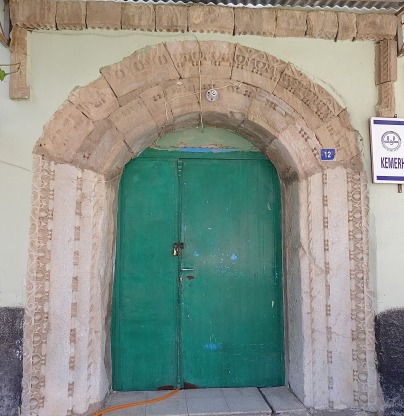 Bits of carved marble from Tyana have been used to fence off a small park near the aqueduct. More pieces can be seen across the road. It’s unclear whether any of these pieces remain in situ.
Bits of carved marble from Tyana have been used to fence off a small park near the aqueduct. More pieces can be seen across the road. It’s unclear whether any of these pieces remain in situ.
More shards of old Tyana crop up around the entrance to the Hacı İsmail Efendi Cami built as recently as 1971.
In the backstreets of Kemerhisar there are still many old kerpiç (adobe) houses, virtually all of them abandoned in favour of modern housing.
For those with their own wheels it’s also worth stopping off in nearby Bahçeli to inspect a marble pool dating back to Roman times.
Sleeping
There is nowhere to stay in Kemerhisar. You will need to return to Niğde for the night.
Transport info
There are half-hourly buses from Niğde to Kemerhisar via Bor. Check the time of the last one back carefully.
